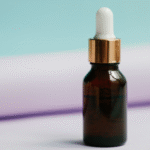An emergency drugs list is a collection of essential medicines that are used during urgent and life-threatening situations. These drugs are kept ready in hospitals, clinics, ambulances, and even some workplaces to ensure quick treatment when time is critical. In emergencies, every second counts, and having the right medicine at the right moment can save lives.
The list includes drugs for various conditions—such as heart attacks, severe allergic reactions, asthma attacks, seizures, and shock. These medicines are chosen based on their effectiveness, fast action, and ability to stabilize the patient until further treatment can be given.
Healthcare professionals are trained to use these medicines quickly and correctly. The availability of these drugs is not just important in big hospitals; even small healthcare centers and rural clinics need to have them on hand.
By maintaining a proper emergency drugs list, medical teams can respond confidently and efficiently to sudden health crises, reducing the risk of complications and improving patient outcomes.
Common Categories of Emergency Drugs
Emergency drugs can be divided into several categories based on the medical condition they address.
Cardiac Emergency Drugs – Used for heart-related emergencies like heart attack, arrhythmias, and cardiac arrest. Examples include adrenaline, atropine, and amiodarone. These drugs work to restore heart rhythm, improve circulation, and prevent further damage.
Respiratory Emergency Drugs – Used for breathing difficulties such as asthma attacks, COPD flare-ups, or anaphylaxis. Salbutamol inhalers, oxygen, and adrenaline are common in this category.
Seizure Control Drugs – Medicines like diazepam or lorazepam are used to stop prolonged seizures and prevent brain damage.
Pain Relief and Sedation Drugs – Morphine, fentanyl, and midazolam help manage severe pain or sedate patients during emergency procedures.
Shock and Allergy Drugs – Adrenaline, hydrocortisone, and antihistamines are given to patients experiencing severe allergic reactions or shock.
Organizing drugs into categories ensures that medical staff can find the right medicine quickly during emergencies.
Cardiac Emergency Drugs
Cardiac emergencies require immediate attention. Adrenaline is one of the most important drugs for cardiac arrest, as it stimulates the heart and improves blood flow. Atropine helps in treating slow heart rates, while amiodarone is used to control abnormal heart rhythms.
These drugs are often given alongside advanced medical procedures like CPR or defibrillation. Quick administration can mean the difference between life and death in such situations.
Respiratory Emergency Drugs
Breathing problems can escalate quickly, making respiratory emergency drugs vital. Salbutamol inhalers relax airway muscles and ease breathing, while oxygen therapy helps maintain proper oxygen levels in the blood.
Adrenaline is also important in cases of anaphylaxis, where swelling blocks airways. Nebulizers and inhalers are usually kept ready in emergency rooms and ambulances.
Seizure Control and Sedation Drugs
Seizures can cause serious harm if they last too long. Diazepam and lorazepam are commonly used to stop seizures quickly. Midazolam may also be used in certain cases.
These drugs help protect the brain from prolonged electrical activity and make it easier for doctors to stabilize the patient. Sedation drugs are also used in trauma cases to keep the patient calm during treatment.
Importance of Maintaining an Emergency Drugs List
A well-maintained emergency drugs list ensures that healthcare providers can respond instantly to life-threatening situations. Without the right medicine at hand, even skilled doctors may struggle to save a patient.
Hospitals usually review and update their list regularly based on medical guidelines and availability. Expired drugs are replaced immediately to maintain readiness.
For smaller clinics, keeping even a basic emergency drugs list can make a big difference, especially in rural or remote areas where advanced care is far away.



